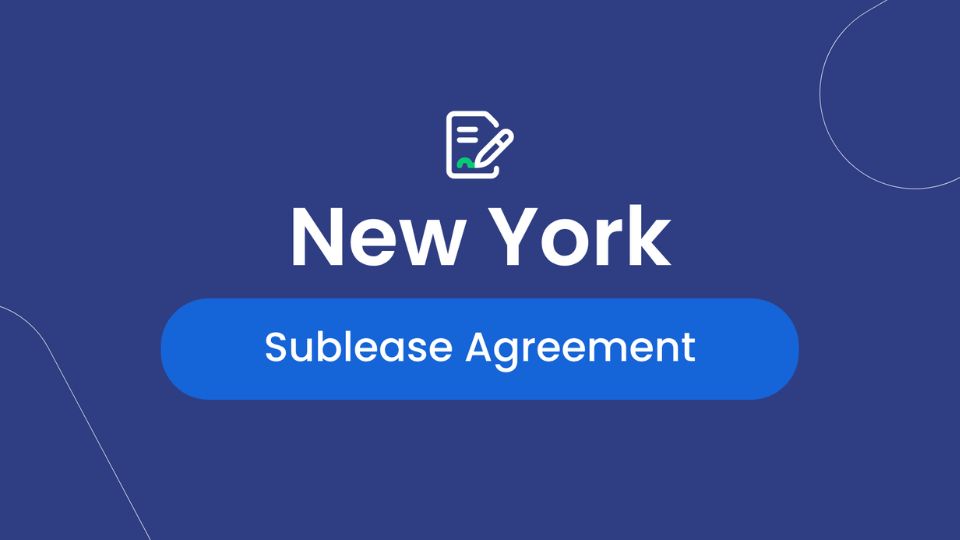Subleasing an apartment can feel overwhelming at times. Subletting can be challenging with many landlords in NYC, but you generally have the right to sublease. We will discuss the legal details of subletting and guide you through the process of subleasing your apartment.
What is a Sublease Agreement?
A sublease agreement is a contract that is legally binding. It is made between a current tenant (known as the “sublessor”) and a new tenant (known as the “sublessee”). This agreement allows the new tenant to live in and take over all or part of a rental property. A sublease agreement refers to the lease agreement between the current tenant and the landlord (known as the “master lease”). It outlines the new tenant’s obligations to the landlord. The landlord usually needs to give their approval for the sublease.
How to Sublet an Apartment in NYC?
Examine Your Lease
To sublet your NYC apartment, start by reading your lease agreement. Many lease agreements require the tenant to get the landlord’s permission before subleasing their apartment. However, some lease agreements specifically state that subletting is not allowed.
Understand NYC Sublease Laws
But, according to the laws in New York State, most tenants have the right to sublet their apartment, even if their lease says otherwise. However, you might still need to ask your landlord for permission to sublet your apartment. If you want to sublease your apartment, it’s important to know the sublet laws in NYC.
Contact Landlord
To follow the formal procedure, you need to send a written request by certified mail and ask for a return receipt. Please make sure to include all the necessary information about your proposed subtenant in your written request. This should also include details about the length of the sublease and the amount of rent your subtenant will be paying.
Find a Subtenant and Submit Them to Your Landlord
According to the laws in New York, your landlord must give you a clear reason for saying no to your request. For example, they might say that the person you want to sublet to has a bad credit history or doesn’t earn enough money. Your landlord has a period of 30 days to decide whether to approve or reject your request to sublet. If the landlord does not respond, it is considered legally as an approval.
Also Read: Listing the Largest Property Management Companies
Subletting a Sponsor Unit in a Co-op
Subletting an apartment owned by a sponsor is a much easier process. In a co-op building, the sponsor (or developer) usually has a lot of special rights for apartments they still own. This includes the ability to rent out the apartment without needing approval from the board. Although you still need to fill out a rental application, you will find the process much easier compared to renting a standard co-op apartment. Sponsor-owned apartments in New York City must follow all rental laws, including the Airbnb laws. These laws prohibit renting out apartments for less than 30 days.
Subletting a Rent-Regulated Apartment in New York City
If you are renting out a rent-regulated apartment, you are not allowed to charge your subtenant more than what you are currently paying in rent, unless the apartment is furnished. If that happens, you can add a 10% extra fee. If you charge your subtenant too much money, the subtenant can use the law that protects tenants with rent-stabilized apartments from being charged too much. The person who is renting the property from someone else might receive compensation that is three times the amount they were overcharged, as well as having their attorney’s fees covered and receiving interest on the overcharged amount.
Furthermore, if you are renting a rent-regulated apartment as a sublessee, there is a risk of becoming a victim of something called a “illusory tenancy” carried out by the landlord. An illusory tenancy is when landlords and tenants use an illegal tactic to make extra money from a rent-regulated apartment. They do this by charging more rent than what is allowed by law. Here’s an example: The normal rent for an apartment is $1,000.00, but the landlord or tenant sublets it to you for $1,800.00. That means that the person renting the property and/or the landlord are making a $800 profit from you, which is against the law.



Leave a Reply